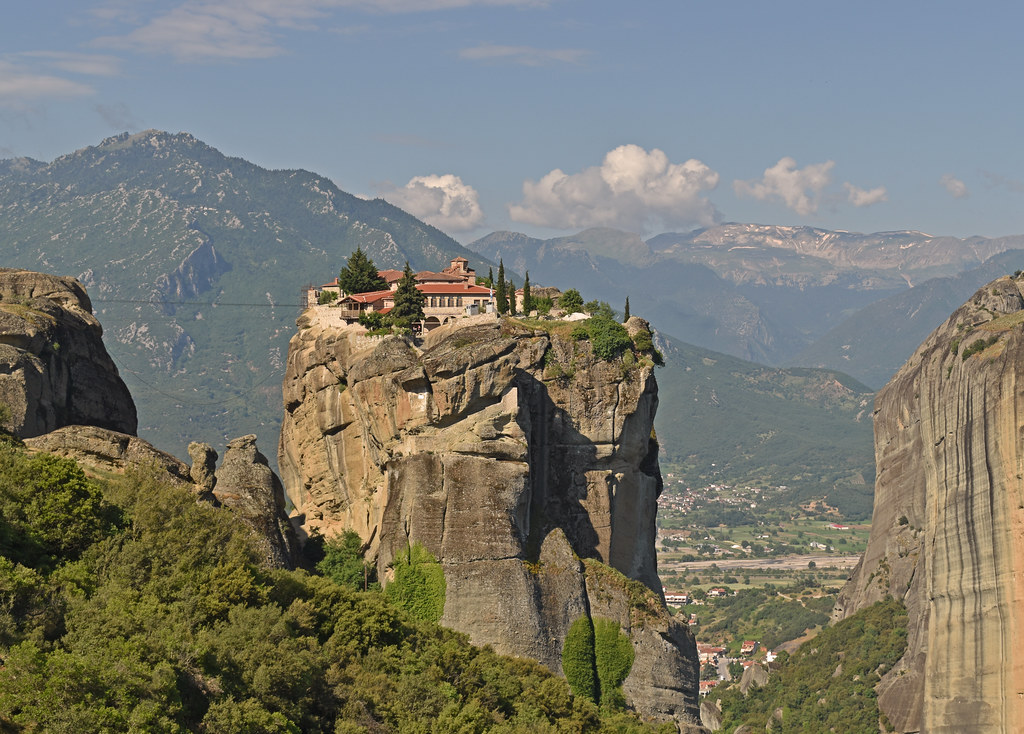
The Meteora Pyli Geopark was designated part of the UNESCO Global Geoparks network as of Thursday, becoming one of the now 213 Geoparks located in 48 countries in the world.
It was among a group of 18 new geoparks whose addition was announced on Wednesday following a bid submitted by the Thessaly Region, the Natural Environment & Climate Change Agency (N.E.C.C.A.), Trikala Chamber, the Trikala Development Agency (KENAKAP S.A.) and the municipalities of Meteora and Pyli.
Welcoming the news, Meteora Mayor Lefteris Avramopoulos said that it put the region on the global geoparks map and highlighted the role of geoparks in serving local communities, helping in the preservation of their geological heritage and a sustainable approach to growth.
“It is a significant recognition that opens new avenues, strengthening developmental momentum to extend the tourist season in terms of quality and sustainability,” he said, thanking all the agencies involved in this result.
Covering an area of 2,409.5 square kilometers, the Meteora Pyli UNESCO Global Geopark is notable for its unique landscape and natural environment, as well as its rich biodiversity, geological monuments and geodiversity.
Meteora dominates UNESCO Global Geopark
Nestled within the picturesque Thessaly region at the center of mainland Greece, the Meteora Pyli UNESCO Global Geopark is famed for the towering Meteora sandstone columns that reach heights of up to 300 meters.
Perched atop these ‘columns of the sky’ are the iconic Byzantine monasteries, constructed between the 13th and 16th centuries. They are adorned with 16th-century frescoes, which mark a key stage in the development of post-Byzantine painting and offer an insight into the region’s rich religious history and artistic heritage.
Located near the town of Kalabaka at the northwestern edge of the Plain of Thessaly near the Pineios River and Pindus Mountains, Meteora is included on the UNESCO World Heritage List.
Emerging about twenty-five million years ago as part of the elevated seabed which was thrust into the sky as the result of massive tectonic movements, the Meteora rocks have created a landscape that looks like something out of a fairy-tale albeit perhaps a scary one.
The beauty of Pindos mountains
Among the other geological wonders of the geopark are the Tafoni formations of Kalambaka, with honeycomb weathering patterns carved into the rock by millennia of erosion.
In the western part of the geopark, the Pindos mountains offer a haven for biodiversity and outdoor enthusiasts with rugged peaks, alpine meadows, lush forests and meandering rivers.
Trekking through the region’s unique terrain, visitors can encounter rare plant species, including the Chalcedonian lily (Lilium chalcedonicum) and the endemic chasmophyte Centaurea kalambakensis which thrive in the area’s distinct microclimates.
The Pindos or Pindus mountain range is roughly 160 km (100 miles) long, with a maximum elevation of 2,637 meters (8652′) (Mount Smolikas).
Because it runs along the border of Thessaly and Epirus, the Pindus range is known colloquially as the spine of Greece. The mountain range stretches from near the Greek-Albanian border in southern Albania, entering the Epirus and Macedonia regions in northern Greece down to the north of the Peloponnese.
See all the latest news from Greece and the world at Greekreporter.com. Contact our newsroom to report an update or send your story, photos and videos. Follow GR on Google News and subscribe here to our daily email!



